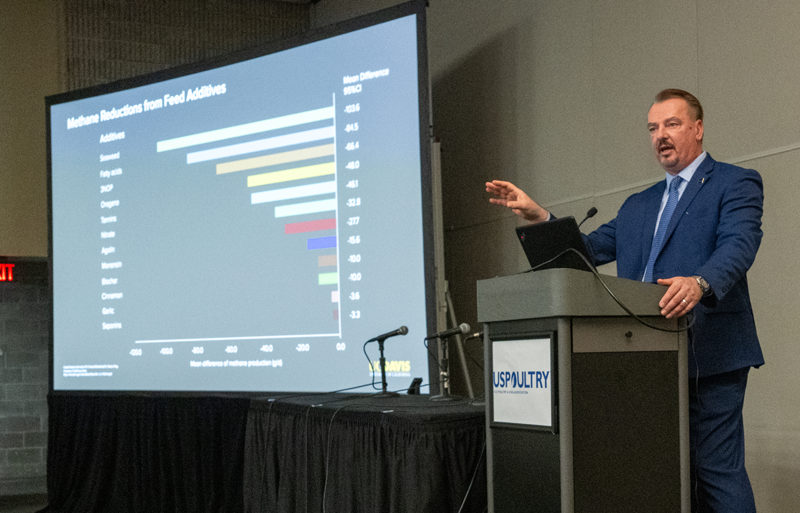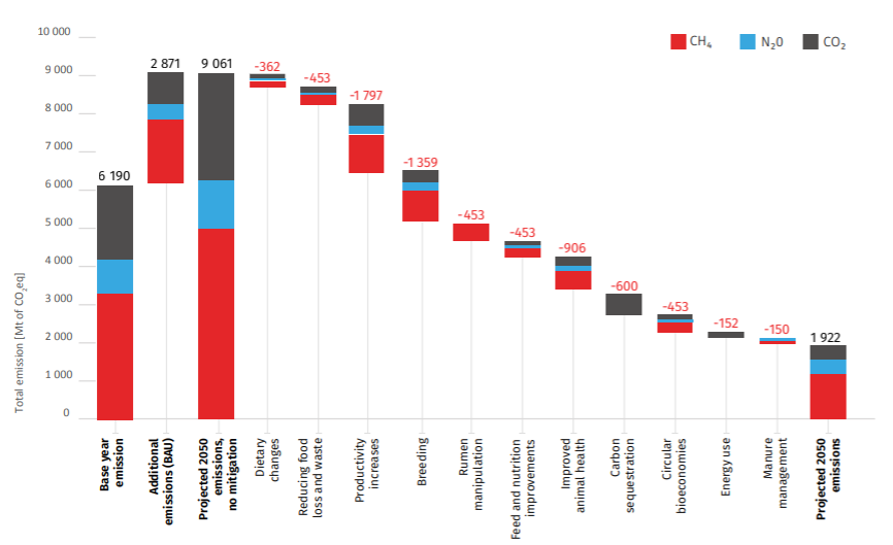Why Dietary Change Is Not the Path to Reducing Animal Agriculture's Environmental Footprint
Written by: Lara Moody | March 11, 2024
 The International Production and Processing Expo (IPPE) is an important opportunity for meetings and networking and also where great opportunities for learning occur. I had the opportunity to participate in the Animal Agriculture Sustainability Summit, hosted by the American Feed Industry Association, Meat Institute, and U.S. Poultry and Egg Association.
The International Production and Processing Expo (IPPE) is an important opportunity for meetings and networking and also where great opportunities for learning occur. I had the opportunity to participate in the Animal Agriculture Sustainability Summit, hosted by the American Feed Industry Association, Meat Institute, and U.S. Poultry and Egg Association.
Frank Mitloehner, Ph.D., professor and air quality specialist in cooperative extension in the Department of Animal Science and director of the Clarity and Leadership for Environmental Awareness and Research (CLEAR) Center at the University of California, Davis, delivered the summit’s keynote address. His insights, layered with graphic data, created a powerful image in my mind of why we must continue to support sustainable animal agriculture, and not dietary change, as a path toward greater environmental footprint reduction.
Mitloehner’s Facts:
- As populations grow and wealth increases, protein demand goes up. Asia’s protein demand, which currently stands at 35 million metric tons and is growing, is almost double that of the Americas. And, Africa’s protein demand is expected to double by 2050.
- 80% of the greenhouse gas (GHG) emissions that occur from raising livestock in developing countries are due to country’s increasing the size of the herd or flock verses the result of other factors including better feed efficiency, animal husbandry practices, animal genetics and more.
- Expecting the global population to change their diets toward plant-based consumption is not realistic. A 2023 study in the United Kingdom reported that just over 70% of respondents self-reported as meat eaters, whereas around 15% said they were flexitarian versus less than 5% were vegan or vegetarian. Also, 98% of U.S. refrigerators contain animal-sourced foods, whether or not individuals eat meat, they likely eat eggs or milk products.
- Going vegan for one year would reduce an individual’s carbon footprint by 0.8 metric tons. Compare that with one flight from the U.S. to Belgium which would generate 1.6 times that amount. If the entire U.S. population participated in Meatless Mondays, that would only reduce the annual carbon footprint by 0.3%, demonstrating the little impact diets have on GHG reduction relative to choices in transportation or travel.
- The path to reducing the footprint of animal agriculture is by working with farmers and not against them. The recent United Nations Food and Agriculture Organization (FAO) report indicated that dietary change is not the path toward emission reduction, rather a collective toolbox of technologies to assist farmers during production, like the items shown in the FAO graph below, is needed.

Pragmatism is an important element of problem solving and advancing solutions. Considering the scope of impact and the likelihood of implementation, productivity gain, animal breeding, feed improvements, animal health and circularity offer much greater chances for success.